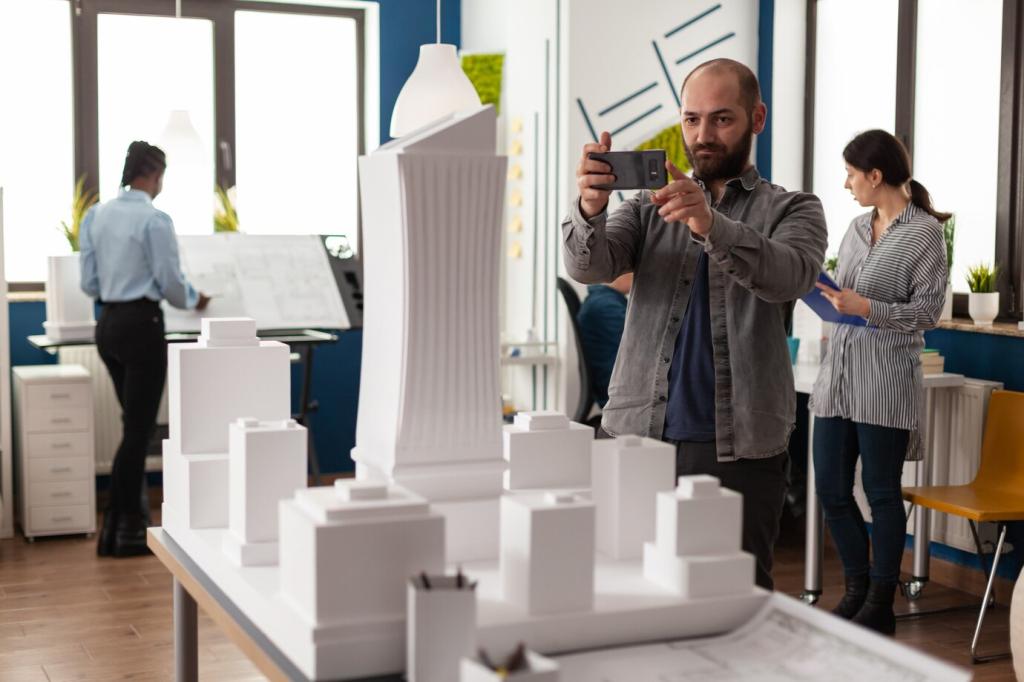Sustainable Design Practices in Modern Architecture
Sustainable design practices have become pivotal in shaping the built environment of the 21st century, as architects and designers seek to address pressing environmental challenges. These practices focus on minimizing environmental impact while maximizing energy efficiency, occupant wellness, and longevity of structures. By utilizing innovative materials, technologies, and planning methods, sustainable architecture harmonizes modern aesthetics with ecological responsibility, setting new standards for how buildings are conceived and constructed.
Site Analysis and Selection
A thorough site analysis is crucial for architects aiming to implement sustainable practices from the initial stages of development. Understanding local topography, climate, vegetation, and water flow allows designers to position buildings in ways that leverage natural light and ventilation. By observing how the sun travels or where prevailing winds originate, architectural solutions can be tailored to maximize energy efficiency. Recognizing unique site features not only preserves biodiversity but also fosters a strong sense of place, ensuring that the built structure complements rather than competes with its environment.
Passive Design Strategies
Passive design harnesses the natural environment to maintain comfortable internal conditions without relying heavily on mechanical systems. Strategies such as orienting windows and walls to maximize solar gain in winter while providing shade in summer help regulate temperature naturally. Building form and materials are chosen for their thermal mass, enabling heat retention or cooling as needed. This careful orchestration limits the need for artificial heating, cooling, and lighting, which significantly reduces a building’s ecological footprint while enhancing human comfort.
Green Landscaping and Biodiversity
Landscaping goes beyond mere aesthetics in sustainable architecture; it can play a fundamental role in promoting local biodiversity and managing resources. Native and adaptive plants require less irrigation and maintenance, reducing water and chemical use. Incorporating green roofs and living walls further boosts insulation and helps absorb rainfall, minimizing stormwater runoff. Thoughtful landscaping also creates habitats for wildlife, ensuring the development is a living part of the wider ecosystem and contributing positively to urban environments.
Energy Efficiency and Renewable Resources
The building envelope, comprising walls, roofs, windows, and insulation, acts as the primary barrier between internal and external environments. Designing an effective envelope is vital for minimizing energy transfer, thus decreasing heating and cooling demands. High-performance glazing, reflective roofs, and superior insulation are implemented to limit heat gain in summer and loss in winter. By meticulously sealing gaps and selecting appropriate materials, modern architects can achieve significant reductions in a building’s energy consumption without sacrificing aesthetics or function.


Use of Recycled and Renewable Materials
Selecting materials with recycled content or made from renewable resources is fundamental to sustainable construction. Reclaimed wood, recycled metal, and repurposed bricks offer the dual benefit of reducing demand for new raw materials and limiting waste sent to landfills. Additionally, fast-growing resources such as bamboo demonstrate that sustainable alternatives do not require one to compromise structural integrity or visual appeal. By thoroughly evaluating a material’s lifecycle impacts, architects can ensure that their choices contribute positively to the environmental profile of a building.

Low-Impact Construction Practices
Reducing resource consumption and emissions during construction is a hallmark of sustainable building. Techniques like prefabrication and modular construction generate less onsite waste and require less energy, as components are manufactured in controlled environments and assembled efficiently. Moreover, careful construction scheduling and sequencing limit disturbances to the site and its surroundings, preserving natural features and minimizing pollution. These practices contribute to faster project delivery and improved worker safety, ensuring that sustainable principles are present from project inception through completion.

Life Cycle Assessment and Durability
Evaluating materials and assemblies for their entire lifecycle impact—from extraction and manufacturing through use and eventual disposal—ensures sustainability goals are met at every stage. Life cycle assessment (LCA) tools assist architects in making informed decisions that lead to reduced embodied carbon and long-term durability. Selecting materials that require minimal maintenance and replacement over decades reduces resource consumption and associated emissions. Structures designed with adaptability in mind can be updated, reused, or deconstructed with ease, further conserving resources and supporting a circular economy approach.
